=================================================================
To subscribe, unsubscribe or change your email address, visit:
http://www.imaging-resource.com/IRNEWS/index-subs.html
Support the Newsletter!
- Find the best price for anything at http://ir.pricegrabber.com
- Shop Amazon, Adorama at http://www.imaging-resource.com/buynow.htm
=====================================================
THE IMAGING RESOURCE DIGITAL PHOTOGRAPHY NEWSLETTER
=====================================================
Volume 16, Number 1 - 13 January 2014
----------------------------------------------------------------------
Copyright 2014, The Imaging Resource. All rights reserved.
----------------------------------------------------------------------
Welcome to the 378th edition of The Imaging Resource Newsletter, and first issue for 2014! Apologies for the delay this time, we normally would have published this issue last Friday, but with the craziness of CES week, there was just no way to pull together a newsletter, so we punted to today.
In this edition, Dan Havlik takes the Sony RX100 II through its paces and, like its predecessor, there's lots to love about this pocket cam. Further on, we provide a roundup of the major cameras, lenses and other cool photo news from the aforementioned Consumer Electronics Show.
On the feature side, we have another excellent article from Steve Meltzer, which takes us through a brief history of French master photographer Brassa�.
Finally, we share some of the most popular news stories from this past week.
Happy reading!
TOPICS
----------
Get Social with IR
Sponsors
Camera Review: Sony RX100 II Shooter's Report
Feature: The piercing eye of Brassa�: the stunning work of a master French photographer
CES Roundup
Popular News
Next Issue
Signoff
GET SOCIAL WITH IR
---------------------------
If you want to stay up-to-date with the latest camera and photography news, get notified when IR posts its latest camera or lens review, and much more, please get social with us on your favorite networking sites by:
By doing so, you'll also be supporting our efforts to deliver the best camera and photography content on the planet. (Google in particular apparently pays lots of attention to Google+ in deciding site/page relevance for its search results, so "circling" us there and +1-ing our site and pages would be an especially big help.) Thanks! We appreciate it!
SPONSORS
--------------
This issue is sponsored in part by the following companies. Please show your appreciation by visiting the links below. (Visiting our sponsor's links really helps support this newsletter, thank you for your attention!) And now a word from our sponsors:
-----------------------------------------------------------------------------------------------------
Are you in the digital photo business? This newsletter is read by more than 47,000 direct subscribers (plus additional pass-along readers), all with a passion for digital photography. For information on how you can reach them, contact us at editor@imaging-resource.com.
-----------------------------------------------------------------------------------------------------
Shooting with the Sony RX100 II
by Dan Havlik
The 20.2MP Sony Cyber-Shot RX100 took the photo world by storm when it was introduced in 2012, ending up on several "best of" lists including our own, where we named it our Pocket Camera of the Year for 2012. And it's a swell camera, for sure, providing near SLR-level image quality with a quality zoom lens in a compact body you can take anywhere. The camera proved quite popular for Sony and just a year after it debuted, the company unveiled a quasi-follow-up to it in summer 2013: the Sony RX100 II. I say "quasi" follow-up, because, according to Sony, the RX100 II doesn't replace the previous model but rather will sit alongside it in the line.
As noted above, the new camera looks very similar to its predecessor, but has a number of important updates. Rather than repeating them here, though, let's just jump into what it's like to shoot with the Sony RX100 II.
In the hand. Like its predecessor, the Sony RX100 II won't
win any awards for originality of design, but it's still a very nice looking
little camera. As we noted earlier, the first RX100 and now the Mark II
version are both derivative of Canon's groundbreaking S90 camera from 2009.
This isn't the first time the elegant, all-black Canon S90 has been imitated
and it probably won't be the last. It's just a classic, simple design, which
the Sony RX100 II takes another step further.
With dimensions of 4.0 x 2.3 x 1.5 inches (102 x 58 x 38 mm) and a weight just under ten ounces (281 grams), the Sony RX100 II is a bit bigger and heavier
than the previous model, but still small enough to qualify as a "pocket"
camera. It feels heavy in your hand, though, and when you consider the luxury
price tag for this model -- $750, which is $100 higher than the previous
generation -- you'll definitely want a reliable wrist-strap for it to prevent
accidental drops. (Note that, as we're sending this edition of the newsletter, Sony has reduced the price of the RX100 II to $699.99, and the RX100-1 to $549.99. We don't know if this change is permanent or not, but we suspect it might be.)
The beauty of a small camera with a big sensor is that it allows you take near SLR-quality images without drawing as much attention as a DSLR often does. And there's a definite discreet feel to the Sony RX100 II, which I was able to use rather inconspicuously for street photography. I just wish that it was a bit easier to hold. While its matte black exterior is handsome and smooth to the touch, the lack of a hand-grip or any sort of texture to the camera body makes its feel slippery in your hand, which is why I advise securing it to your wrist with a strap or even purchasing an add-on grip. [Ed. note: See the full RX100 II review on our site, for an elegant solution to this, via an aftermarket add-on grip.]
The Sony RX100 II's Carl Zeiss Vario-Sonnar-branded, 3.6x, optical zoom lens
is quite large, even when retracted, covering a significant portion of the
front face of the camera. That didn't leave much room for my fingers, and my
right hand felt scrunched while shooting with the camera. Overall though, the
RX100 II felt well balanced, with its metal build and big, 3-inch tilting
glass rear display, giving it an air of understated luxury.
Controls. If you're familiar with the Sony RX100 then the
layout of the RX100 II will look very familiar indeed. From the front, the two
cameras are dead ringers. The only noticeable difference is that the RX100 II
adds a hotshoe on top of the camera, which you can see as a sliver above the
3.6x optical zoom lens.
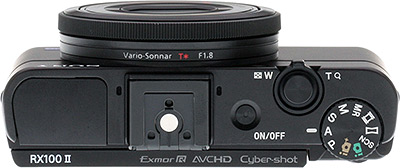
From the top, the RX100 II also looks a lot like its
predecessor, with the only noticeable changes being the aforementioned hot
shoe, which is straddled by two smaller, vertical holes for the stereo
microphone. The body also looks slightly thicker, but that's mainly because of
the folding rear screen, which juts out slightly in the top view. Otherwise,
the small shutter button with the surrounding plastic zoom ring is in the same
place on the front right of the camera. The shutter button doesn't look like
much, but it's quite responsive. While photographing the Medieval Festival in
New York City, I was able to move through the crowd and quickly snap photos of
people dressed up in period costumes without them noticing.
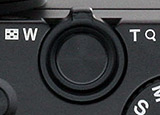
I was less keen on the flimsy, plastic zoom ring that surrounds the shutter.
It felt under-matched for the big chunk of Zeiss-branded glass on front of the
camera, with the camera zooming slowly and not particularly smoothly. Speaking
of zoom, the Sony RX100 II adds a smart function its predecessor didn't have:
the ability to "step zoom" using the knurled, black ring around the lens. This
is something you have to "turn on" via the RX100 II's somewhat complicated menu
system, but once it's engaged, it will let you zoom to predefined focal lengths
of 28, 35, 50, 70, and 100mm by just nudging the dial to the left or the right
(you don't need to be precise.) That's a nifty feature, but it's also not
particularly fast.
A point made in our 2012 review of the RX100 holds true with the Mark II
version: the front ring control is both a blessing and a curse. It's great once
you decide how you want to use it -- such as the step zoom feature -- but when
you switch modes its function can change. Indeed, so many changes affect other
operating factors, that the Sony RX100 II's many options can become something
of a burden. In a nutshell, while the RX 100 II's controls seem simple, they're
actually quite confusing if you dive deeper. Word of warning: you may spend
more time figuring out all the bells and whistles on this camera than you
expected.
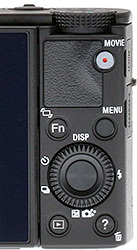
On top of the Sony RX100 II is the small, recessed on/off button, and the
small, knurled mode dial, both of which do what they're supposed to. The mode dial strikes a good balance between being easy enough to adjust, yet stiff enough to not get changed accidentally. On back, the controls are similarly basic-looking (and identical to the
RX100). There's a recessed, one-touch movie button to the right of the rubber
thumb-rest, which is easy to engage if you want to quickly start shooting a movie,
but not so easy to access that you record video by accident.
Otherwise, the rear of the camera has four small buttons for Function, Menu,
Playback and Help/Delete, surrounding the small Control ring and engage button.
The simplicity of the controls on the Sony RX100 II show that it's aimed at
the point-and-shoot crowd even if its does have the superior image quality and
complex functionality of a more advanced camera.
Tilting display. One of the major upgrades
of the Sony RX100 II compared to its predecessor, is the tilting, articulated,
3-inch LCD screen. Like the previous model, the RX100 II's display has
1,228,800 dots (307,200 pixels) of resolution, and images look crisp and clear
in playback. There's no optical or electronic viewfinder (EVF) on the RX100 II,
though the camera's hotshoe is actually a Multi Interface Shoe that not only
lets you use external strobes, but also allows you to attach an (optional) EVF. The
Sony FDA-EV1MK Viewfinder, which offers 2,359K dots of resolution, does not
come cheap, though: it'll cost you an additional $450.
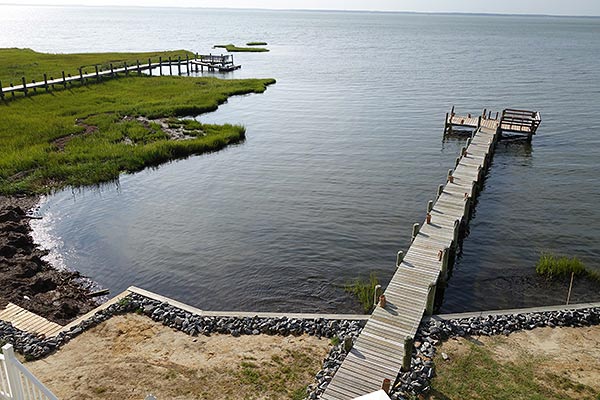 |
Autofocus. The Sony RX100 II was surprisingly quick at auto focusing during my time with the camera. In the technical section of this review, we speculated that the camera's new BSI sensor might have something to do with that. Without going into it too deeply again, because the RX100 II's sensor does such a bang up job of gathering image data, even in low light, the camera's Contrast Detection-based AF system has cleaner info to work with and can therefore focus faster. Sony has said that the AF speed has improved by 10% in the RX100 II, and while there was no way for me to test that since I wasn't working with the two cameras side by side, the RX100 II was indeed very quick on the draw. (Our lab results do however show about an 18% improvement in AF speeds when wide and tele speeds are averaged.)
You have to be a bit careful with this camera though. The shot to shot speed of the Sony RX100 II, which I'll go into more in the next section, is so quick it can outpace the autofocus, and you'll end up with a bunch of blurry pictures. Unless you're in a real hurry to fire off a bunch of photos of, for instance, sports or runaway toddlers or pets, wait the extra split second for the camera to achieve focus lock before you take your next shot. I was able to use this method to capture lots of sharp shots of characters at the Medieval Festival.
Technically speaking, the Sony RX100 II uses a 25-point auto-focus system,
and offers center spot, flexible spot, and tracking modes, including face
tracking, which came in handy for my on-the-fly Medieval portraits. Street
photographers will surely love this camera.
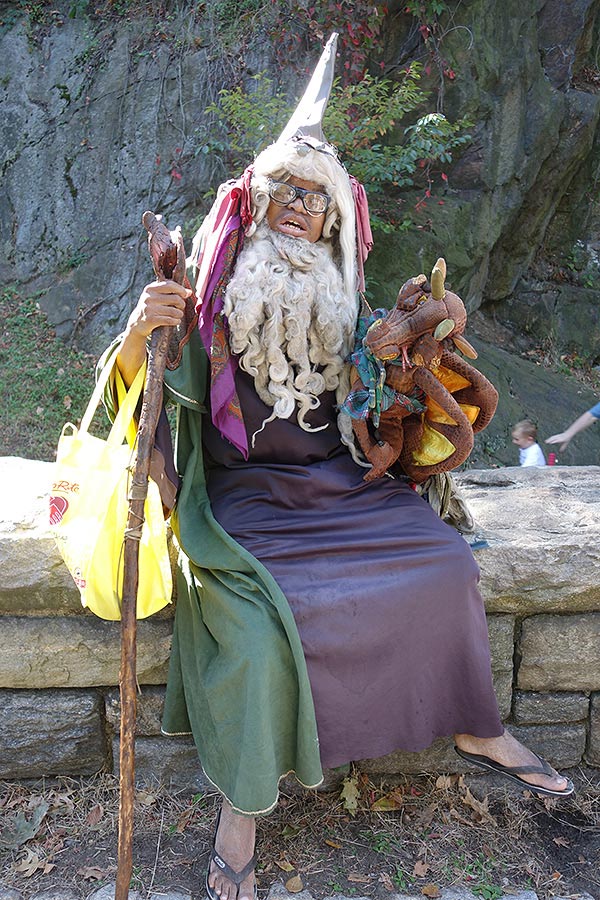 |
On the street. The Sony RX100 II is a no-brainer if you need an excellent, unobtrusive street camera. |
Performance. Generally speaking, the Sony RX100 II is a pretty zippy performer. I mentioned the camera's quick autofocus in the previous section, but what really impressed me was how fast the RX100 II is from shot to shot. The camera is powered by Sony's BIONZ image processor and it does a good job of keeping this camera rolling. Just lightly trigger the shutter button, and the RX100 II will capture shot after shot with barely a pause between. Many compact cameras, even the expensive ones, experience some kind of shutter lag or delay between shots to process the image info, but in my real world testing the RX100 II did not.
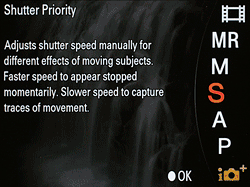
The Sony RX100 II also has a very quick burst function, called Speed Priority Advance mode, which in my testing let me rattle off 9-10 frames per second. In this mode, focus and exposure are locked from the first frame. After I fired off about 12 JPEG images using this Speed Priority Advance mode, the camera slowed down to one frame per second, as it cleared its buffer. It recovered quickly though, and after another few seconds, I was able to fire off another burst. I got about the same buffer depth -- 11-12 images -- when shooting Raw images, and could fire off 10 shots in Raw + JPEG mode before the buffer filled up. Oddly, when shooting Raw or Raw + JPEG, frame rates weren't as high. (In the lab, performance with Raw files varied between 4.6 and 5.8 fps.) We did not see burst rate decline when shooting in Raw and Raw + JPEG modes with the RX100.
There are a few areas where the Sony RX100 II lags in its performance. For
one, it's not very fast to start up and get to first shot: I average about 2-3
seconds there. Similarly, it took about two seconds to shut down and collapse
its zoom lens. These certainly aren't deal-breakers -- AF and shot-to-shot
speeds are more important -- but I wish it was a bit quicker off the blocks,
considering how pricey it is. The moral of the story: keep the RX100 II turned
on if you want to always be ready for a quick shot!
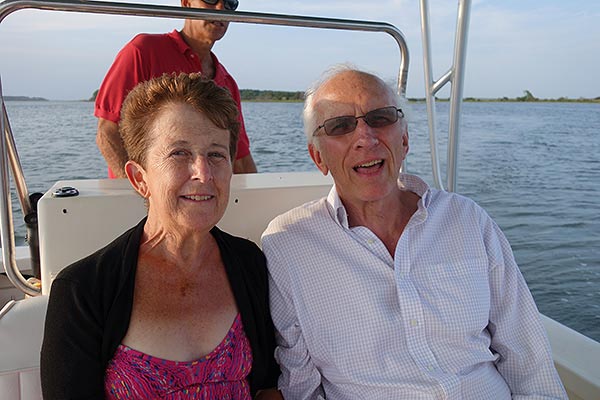 |
Image quality. The image quality from the Sony RX100 was
great for a compact camera, and the RX100 II produced even better results. We've
mentioned it previously, but Sony's decision to put a new BSI sensor in the
RX100 II while keeping the same 20.2 pixels of resolution and the same 1-inch
type size was a smart move. In decent lighting at low ISO, the RX100 II
performs as well as the previous model, which is to say, it captures fantastic,
SLR-quality photos. And in low light it excels its predecessor, as we've demonstrated in side-by-side tests in other sections of this review.
I used the Sony RX100 II during a late summer trip to Colleague Island in
Virginia, and the camera did a superb job rendering the deep blue skies, green
marsh grass and soft light on the island. Since it's such a small camera, I
had no problem slipping it into a light bag and pedaling around the island on a
bicycle while pausing every so often to snap a shot. Most of my favorite photos were
captured in the late afternoon, with the sun just beginning to go down, while
shooting at the camera's native, base ISO of 160. (The RX100 II is able to go
as low as ISO 100 as an extension and as high as ISO as 25600 with Multi Frame
Noise Reduction.)
The Sony RX100 II did a great job of capturing detail in the lower shadow areas of beach houses I photographed, while not blowing out too many highlights in the brighter sunlight hitting the rooftops. Meanwhile, the surrounding skies were filled with a glorious pale blue color with wispy, white fingertrails of clouds in the distance. Detail throughout these images was excellent, with the RX100 II's 20.2MP sensor providing abundant resolution with clean results, thanks to its larger-than-average size for a pocket camera.
Where the Sony RX100 II really sets itself apart is in its ability to
capture, sharp, detailed images in low light at high ISOs. The biggest
innovation with this camera, as we've mentioned before, is that it's the first
model with a 1-inch type backside illuminated sensor, which is designed to
increase the amount of light the chip can capture. In my testing, I found the
RX100 II to be an excellent low light performer, and I felt totally comfortable
shooting with the camera at up to ISO 6400, which is a rare thing in my
experience for a compact camera.
In indoor shots in low light at ISO 6400, images not only had manageable noise, but the overall detail was sharper when I zoomed in, which shows the RX100 II doesn't overdo its anti-noise processing to control digital grain. The result is that more detail was intact in my indoor, low light shots, much like a DSLR with a larger APS-C size sensor. The camera also did quite well with night shots I captured of the local stores in our neighborhood at ISO 3200 and 6400, with surprising amounts of good detail despite the dark shooting conditions. In a pinch, Sony's Handheld Twilight mode, which shoots multiple shots of a night scene and then combines them into one image with reduced noise and blurring, was also effective, though the feature tends to blur some detail, particularly skin tones. There's a similar feature called Multi Frame NR in the camera's ISO settings, which is another one of the RX100 II's quirky, confusing and occasionally redundant menu and feature structures.
The difference is that Handheld Twilight is an entirely "Auto" scene mode, in that you can't adjust exposure compensation or set ISO directly. The Multi Frame NR setting applies to normal PASM shooting, giving you more flexibility. (Note, though, that Multi Frame NR is only available when shooting in JPEG-only mode; if RAW capture is enabled, Multi Frame NR isn't available.)
| Sony RX100 II - A compact camera that can handle low light |
 |
| 28mm eq., 1/50s, f/2.8, ISO 3200 |
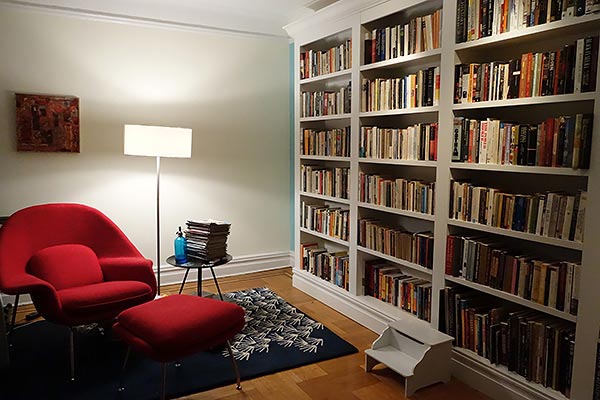 |
| 28mm eq., 1/125s, f/4, ISO 6400 |
The low-down. Compact camera lovers, meet a camera that can go low without needing flash. |
My only real complaint about the Sony RX100 II's low light shooting
abilities is that, given how much latitude the camera offers for shooting
clean, detailed images at high ISOs, I would have liked a dedicated ISO button
on the camera body for making quick changes. I know you can adjust ISO with the
various control rings and menus, but it requires an extra step.
Overall though, the Sony RX100 II is an exciting camera to use when it
comes to image quality. While I wouldn't trade it for a good DSLR with an APS-C
sensor -- such as the Nikon D7100 or Canon 70D -- even at the RX100 II's high
$750 price, it's a lot cheaper than either of those cameras, especially when
you factor in the cost of a DSLR's interchangeable lenses. Plus, the
RX100 II is a heck of a lot smaller than even the smallest DSLRs on the market.
For those DSLR shooters who don't want to bring their big rigs with them
everywhere, the Sony RX100 II is a great second camera you can stash in a
pocket and be assured of terrific quality to boot.
View the IR Lab's in-depth Sony RX100 II image quality test results by clicking here, and be sure to check the full review on our site, to see side-by-side comparisons of the RX100 II against its top competitors.
Video. The Sony RX100 II also performed well when it
came to video quality, which is also likely due to the new backside
illuminated sensor's low-light shooting chops. During the Medieval Festival, I
was able to shoot clean footage of Irish dancers performing on a shadowy stage,
and then slowly pan out to the daylight where young girls dressed as princesses
and witches danced as well, as they tried to imitate the performers. The
RX100 II did a great job of not only producing crisp video of the shadowy
stage, while automatically brightening the scene to show the dancers, but it also
transitioned very smoothly from the darkness to the daylit area, creating a
high-quality clip.
As with the previous model, the RX100 II can shoot 1080p using the AVCHD format, but along with smooth frame rates of 60i and 60p, the camera adds a 24p mode, which makes video footage look more "film like," whatever that means. Seriously though, 24p is a nice option, which the previous model didn't offer. Personally, I would have preferred if the RX100 II had a full, 1920 x 1080, HD video mode in the more compatible MPEG-4 video format. The camera offers MP4 shooting as an option, but its at a maximum of 1440 x 1080 at 30p only.
Otherwise, it's a very good little camera for shooting HD video. There's
some manual override available, including for exposure, if you want to get
creative when shooting video. Meanwhile, the camera's SteadyShot image
stabilization helped keep my video quite steady, even when zoomed in and while
panning. Sound quality from the built-in stereo microphone on top of the
camera was good if not outstanding -- about what I expected -- though the wind
noise reduction feature did help a lot during my outdoor video shooting at the
Festival.
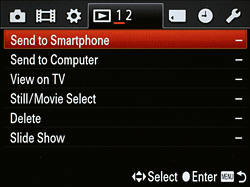
Wi-Fi. The Sony RX100 II does have built-in Wi-Fi, but setting it up and getting the camera to communicate wirelessly with a computer so you can share your photos on a social network is not easy. It didn't help that the RX100 II early sample unit I tested did not come with a manual. I did find an RX100 II manual online in an HTML format on Sony's website, but the information on how to use the camera's Wi-Fi radio to zap images to my computer was not helpful, and I ended up giving up. On the other hand, there was extensive information on how to use the camera's Near Field Communication (NFC) radio in the online manual. The only problem for me, though, is that NFC is not supported by the Apple devices I own, so couldn't use it to establish a connection with my iPhone or iPad. On the other hand, if you have an NFC-compatible device, such as some recent Android or Windows phones and tablets, the process seems simple: just turn on NFC on your
smart device, then hold the Sony RX100 II next to the NFC device, and the two will connect and images and video are transferred through the air, courtesy of a Wi-Fi link.
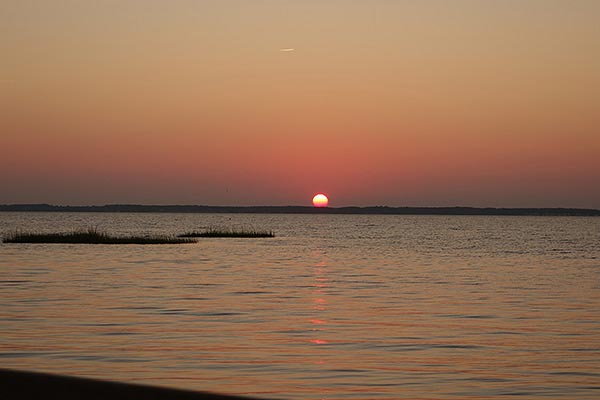 |
To sum it all up, the question for me isn't why you'd want an RX100 II, it's more like why wouldn't you? If you've been shooting with a compact that has a traditionally small sensor, this is a great next step. And for pros and enthusiasts looking for a lighter alternative for casual shooting, this camera is a great option to the bulkier rigs.
-----------------------------------------------------------------------------------------------------
Feature: The piercing eye of Brassa�: the stunning work of a master French photographer
by Steve Meltzer
"My ambition has always been to show the everyday city as if we were discovering it for the first time."
A superb new exhibition of photographs, Brassa�, Pour l'amour de Paris is on display at the Paris Mayor's Office, the H�tel de Ville. It is a reminder to all of us of the photographer who -- along with Henri Cartier-Bresson -- dominated European photography in the 1930s.
Brassa� became interested in photography as a way to record encounters on his nightly walks through the streets of Paris. He enjoyed these long strolls after dark and began carrying a camera and tripod in 1929. Two years later, he compiled some of these photographs in a book entitled Paris de nuit (Paris by night). It was a stunning collection of black and white images that juxtaposed luminous, dreamlike nightscapes with contemporary documentary images of the nighttime's denizens. It was a technical marvel as well, for he was one of the first photographers to shoot extensively at night.
"Night does not show things, it suggests them. It disturbs and surprises us with its strangeness."
These photographs are very different from Cartier-Bresson's as they are theatrical performances rather than decisive moments. Brassa�'s subjects are not only aware of the photographer, they collaborate with him. Brassa�'s unique style gave Paris de nuit its distinctive intimacy and led to its huge public success. It was a revelation too for his artist friends. Fellow night owl Henry Miller wrote:
"Brassa� is a living eye�his gaze pierces straight to the heart of truths in everything."
The critic Jean Paulhan put it another way, "this man has more than two eyes."
Brassa�'s was born Hal�sz Gyula in Braşov, Hungary in 1899 to an Armenian mother and Hungarian father. As a child they lived in Paris while his father taught at the Sorbonne but in the 1910s the family resettled in Budapest. There the young man studied painting and sculpture at the Academy of Fine Arts until he enlisted in the Austro-Hungarian cavalry to fight in the First World War.
After the war, and with Hungary in shambles, he moved to Paris. In 1929, when he became interested in photography he turned to fellow Hungarian immigrant Andr� Kert�sz to teach him the medium. Around this time he realized that Hal�sz Gyula was not a good name for an artist so he took on the name, "Brassa�" which in Hungarian means "from Braşov."
With the publication of Paris de nuit the name "Brassa�" became famous and he was soon mingling with high society, photographing intellectuals, politicians and the wealthy. This new fame also enhanced his status with his circle of caf� pals, including Salvador Dal�, Pablo Picasso, Henri Matisse, Alberto Giacometti and Jean Genet.
"I need the subject to be as conscious as possible that he is taking part in an event� I need his active participation..."
Brassa� was at ease with all types of people and this played an important role in his photography. In the course of his nighttime perambulations he befriended pimps and streetwalkers, hoodlums and laborers, who allowed him to photograph freely among them. He was equally accepted photographing nude showgirls backstage at the Folies Begere as he was photographing prostitutes and their clients at Chez Suzy.
Paris by Night was also a technical achievement. In an era of slow lenses and even slower film, few photographers ventured out after dark. Brass� relished the darkness and by trial and error learned to get the night shots he was after. He invented ingenious tricks to help him, like gauging extended exposure times by how long it took for him to smoke a Gauloises.
At the end of his night's shooting, he would return to his room at the H�tel des Terrasses. Drawing the curtains, he turned the small space into a darkroom in which he would process his negatives and make prints. These prints were remarkable because of the richness of the darkness in them.
Using his training as a painter, Brassa� framed his shots so that small areas of light pierced large areas of blacks and shadows. Light reflected in wet streets and diffused by fog, would define shapes within the dark. This contrast gave his printed images richness and depth and he called these prints his "little boxes of night."
Cartier-Bresson neither processed his own film nor made his own prints. There were many other differences between the two men. Cartier-Bresson always shot with a 35mm Leica camera, working quickly and unobtrusively. He would shoot dozens of frames chasing his "decisive moment," his subjects all the while unaware of his presence.
In contrast, Brassa� shot with a large, fixed lens, 6.5x9 cm Voigtl�nder Bergheil folding camera. Brassa� mounted the camera on a heavy wooden tripod. Although he shot with other cameras, like the Rollieflex, he never used a 35mm Leica, saying that he had no interest in taking dozens of shots of the same scene.
Also, unlike Cartier-Bresson he happily employed auxiliary lighting. For interior photographs like his caf� shots, he worked with an assistant who prepared a flash powder gun and a reflecting screen, while Brassa� chatted up and posed his subjects. The exploding flash powder produced a softer light than flashbulbs, giving the pictures their distinctive lighting. However, these powder explosions were so bright and loud that Picasso nicknamed Brassa� "the Terrorist."
Brassa� was never the distant observer Cartier-Bresson was. Not only were his subjects co-conspirators in the photos, they were his acquaintances. Brassa� wants us to like them: we are among friends. We are guests at the table.
Around the time of Paris du nuit's publication, he joined with Hungarian immigrant Charles Rado to create the Rapho agency, one of the first press agencies specializing in humanistic photography. The new agency was a perfect fit for Brassa�, but his ability to travel to cover stories was limited.
In the ruins of war, Romania had subsumed Braşov, and Brassa�'s Hungarian identity papers were invalid -- he was a stateless person. It wasn't until 1949, a year after marrying the French citizen, Gilberte Boyer, that he became naturalized and could travel freely. This allowed him to work throughout the 1950s and 1960s shooting commercial assignments for magazines like Harper's Bazaar.
In 1962, he gave up his commercial photography for sculpting but continued to exhibit and sell prints. He had his first international exhibition at the Museum of Modern Art in 1948 and followed it with shows there in 1953, 1956, and 1968. He was the guest of honor at the Rencontres d'Arles Festival in France in 1970. In all, he produced dozens of photography books and nearly 35,000 exposures. Today his negatives, prints and contact sheets are housed at the George Pompidou Center in Paris. He died in 1984 in southern France near Nice.
Brassa� once summed up his photography by saying:
"Basically, my work has been one long reportage on human life."
(Top portrait of Brassa� copyright John Loengard.)
-----------------------------------------------------------------------------------------------------
CES Roundup
-----------
Last week, it was all "Viva Las Vegas!" for another annual Consumer Electronics Show. Here at IR, we had both a team at the show itself and folks manning the fort back at HQ to bring you the latest and greatest camera and photo news coming out of CES. There were quite a few cameras (and lenses) released from most of the major manufacturers -- although not as many as in previous years -- so here's a little roundup listing of all the big announcements:
- Canon:
- Fujifilm:
- Nikon:
- Panasonic:
- Samsung:
- Sigma:
- Sony:
-----------------------------------------------------------------------------------------------------
Quick Hit: Whither NEX: What does the end of the NEX moniker mean for Sony E-mount fans?
by Mike Tomkins
Over the last few months, Sony has stopped using Alpha NEX branding on newly-announced mirrorless cameras, instead using only the Alpha brand. In the process, it's caused some confusion and consternation among photographers shooting NEX cameras. Readers have contacted us, wanting to know what the change means for NEX cameras and for the E-mount. Will the fundamental concept be changing, or perhaps will the mount go away altogether? And how does the just-announced Sony A5000 sit alongside its predecessors in the NEX line?
During the Consumer Electronics Show, Imaging Resource Publisher Dave Etchells, Senior Editor Arthur Etchells and Associate Editor William Brawley met with Mark Weir, senior technology manager at Sony Digital Imaging, to discuss the change, the reasons behind it and the implications for the company's cameras. First and perhaps most importantly, we wanted to know one thing: Why has the NEX brand gone away?
"I think that the primary motivation here is to unify all of Sony's Alpha interchangeable-lens cameras under the Alpha brand," said Weir. "We've always used the Alpha brand for our interchangeable-lens cameras, from the very first models, the NEX-5 and NEX-3. The Alpha logo is prominently featured on each model.
"However, the NEX model name prefix seems to have grown in prominence, such that the general public refer to them as NEX cameras instead of Alpha cameras. And therefore there was some concern on our part that they might not be perceived as Alpha cameras."
 |
Sony's first NEX cameras -- the NEX-3 and NEX-5 (shown in cutaway) -- both featured prominent Alpha branding, yet the NEX model number was what the public latched onto.
|
"We wanted to be sure that everyone recognized that E-mount cameras are very much Alpha-brand cameras, not NEX-brand cameras. So I think the primary motivation here is the unification of all of our interchangeable-lens cameras -- whether they are E-mount or A-mount -- and a recognition that they're all Alpha models.
"That's really our primary objective, because what we saw happen was a model name prefix somehow grew to become the brand. So what we've done since the introduction of the Sony A3000 last spring is to change the model name prefix. The brand is still Sony Alpha, but the model name prefix has been changed from NEX to ILCE, meaning 'interchangeable-lens camera, E-mount.'
"Since the Alpha 3000 was introduced, its model name has been ILCE-3000. The next E-mount models that were introduced were the Alpha 7 and the Alpha 7R, and their model names are ILCE-7 and ILCE-7R, respectively. And then at CES on January 6th, we announced the Alpha 5000, whose model name is ILCE-5000."
But why make that change now? One might, perhaps, think that a strong brand which had developed positive recognition with the buying public would be a good thing, whether or not it had been intentional on Sony's part.
"The model name prefix started to segregate our E-mount cameras from our A-mount cameras," responded Weir, "and that was never our intention.
"There was also confusion about compatibility. The model name prefix had grown to take on all kinds of significance, and there was concern that consumers could easily misunderstand there to be a lack of compatibility between the two. Our A-mount cameras and E-mount cameras share many cross-compatibility characteristics, yet there was a perception that NEX and Alpha were somehow quite different."
 |
The Sony Alpha A99 is the company's current flagship model.
|
So if the change in branding is simply a matter of housekeeping for Sony, with the aim of reinforcing the cross-compatibility of its products, does that mean we can look forward to continued development of the Alpha E-mount product line, albeit without the NEX brand?
"Sure!" confirmed Weir. "I mean, we have many opportunities with our technology under the Alpha brand. Obviously, we're still very much committed to the A-mount and E-mount systems. We want consumers to realize that they all represent our Alpha technology, and are Alpha models."
Does that mean we can look forward to continued evolution beyond the current A-mount flagship, the A99? It's been almost a year since the last Translucent Mirror-based camera was announced, so more news on this front would be a big deal for A-mount users.
"All we're really prepared to disclose is what we've said in the past," hedged Weir. "We remain committed to the A-mount system, and I'm sure that that commitment will be very clear."
 |
The Sony A5000's features align it more closely with the NEX-3N than the NEX-5T.
|
And what of the just-announced Sony A5000 -- just how does it fit into the model line? We've heard from readers confused as to whether the choice of numeric suggests that this model follows on from the Sony NEX-5T, the NEX-3N, or marks a new line altogether. Which is it?
"I can see that there might be some confusion there," agreed Weir, "because some may see the Alpha 5000 designation as being somewhat similar to another 5-series camera, the NEX-5T. However, that's merely coincidental.
"The Alpha 5000 is not the successor to the NEX-5T, in spite of the five in their model names. We realize that the shift from a three to a five in the model number might confuse some, but the Alpha 5000 is the successor to the NEX-3N. If you look at the feature set, the configuration, the control layout, the objective of the design of the model and its target user, the Alpha 5000 is much more consistent with the NEX-3N than it is with the NEX-5T."
So there you have it: the Sony NEX name is no more, but the exceptional cameras of the NEX line will continue with the ILCE prefix. Sony's commitment to the E mount is steadfast.
Here at IR, we felt the NEX name deserved a memorial appropriate to the years of services it's provided to cameras that have followed us everywhere. So we raise a glass to the memory of the NEX prefix, gone but not forgotten:
 |
NEX, we hardly knew ya.
To many happy years of Sony Alpha ILCE shooting.
|
-----------------------------------------------------------------------------------------------------
POPULAR ON THE SITE
-----------------------
At http://www.imaging-resource.com/news you can keep track of the photo news on our main site. Among the most popular stories:
- Philips debuts affordable 28� 4K UHD display at CES (http://www.imaging-resource.com/news/2014/01/06/philips-debuts-affordable-28-4k-uhd-display-at-ces)
- More 4K: Toshiba announces two laptops with 15.6� UHD displays (http://www.imaging-resource.com/news/2014/01/10/more-4k-toshiba-announces-two-laptops-with-15.6-uhd-displays)
- More 4K desktop monitors presented at CES. Is this the new standard? (http://www.imaging-resource.com/news/2014/01/09/more-4k-desktop-monitors-presented-at-ces-are-they-becoming-the-new-standar)
- Panasonic jumps on 4K train with drool-worthy �GH Next' (http://www.imaging-resource.com/news/2014/01/08/panasonic-jumps-on-4k-train-with-drool-worthy-2000-4k-gh3-successor)
- Bye bye, blur�Apple to stabilize iPhone camera? (http://www.imaging-resource.com/news/2014/01/10/bye-bye-blurries-apple-to-stabilize-iphone-camera)
----------------------------------------------------------------------------------------------------
NEXT ISSUE
---------------
We'll see you next on January 24, with a regularly scheduled edition (and lots more news and analysis to share)!
SIGNOFF
-----------
That's it for now, but between issues visit our site for the latest news, reviews, or to have your questions answered in our free discussion forum. Here are the links to our most popular pages:
Newsletter Archive: http://www.imaging-resource.com/cgi-bin/dada-nltr/mail.cgi/archive/irnews
Daily News: http://www.imaging-resource.com/news
SLR Gear: http://www.slrgear.com
New on Site: http://www.imaging-resource.com/new-on-ir
Review Index: http://www.imaging-resource.com/camera-reviews
IR Photo Contest: http://www.dailydigitalphoto.com
Google + http://plus.google.com/+imagingresource
Facebook: http://www.facebook.com/imagingresource
Twitter: http://www.twitter.com/IR_Lab
Happy snapping!
Dave Etchells & the IR Editorial Team
editor@imaging-resource.com
| 
